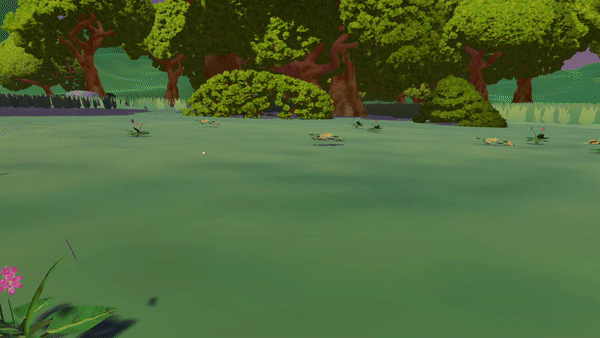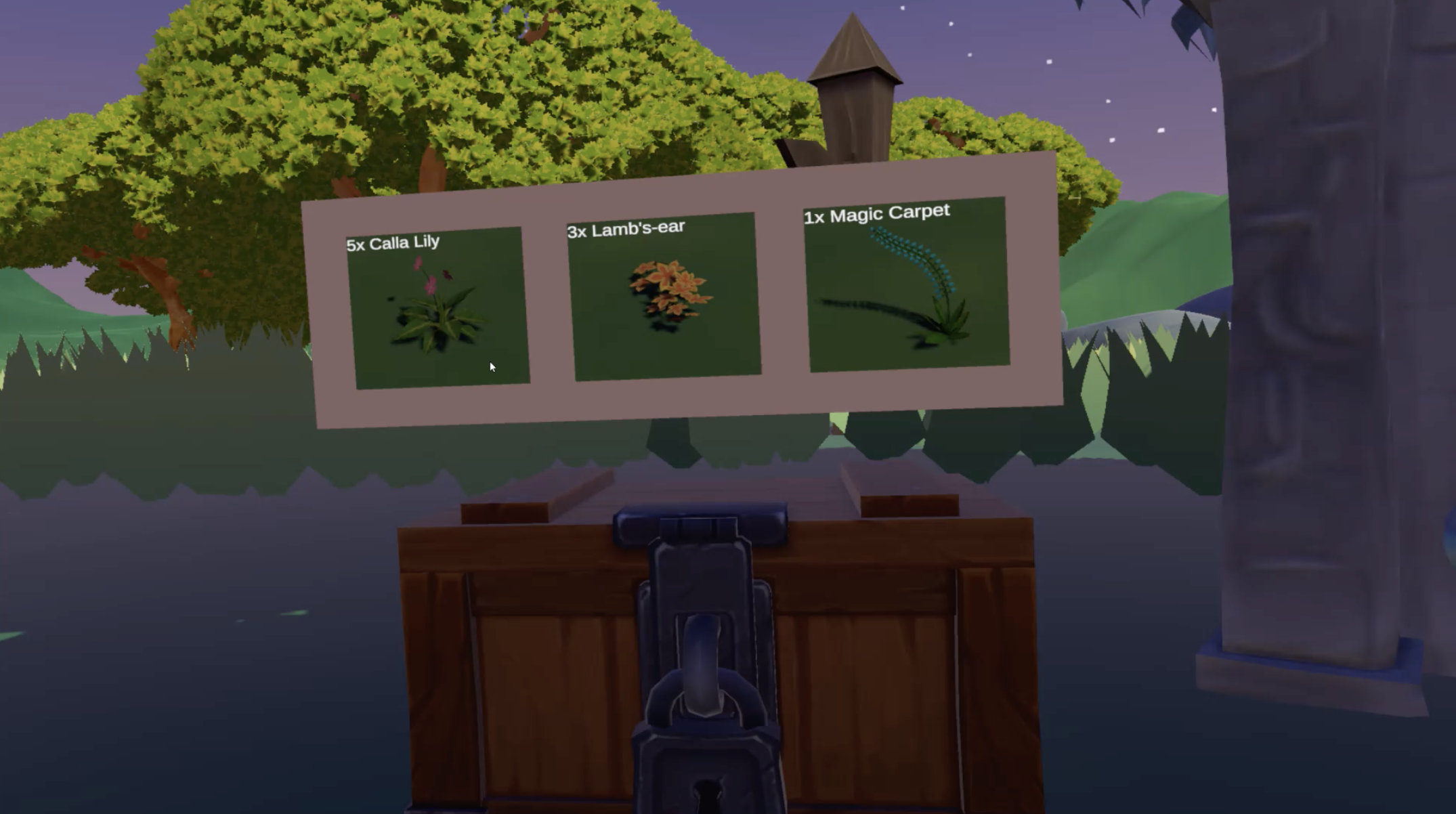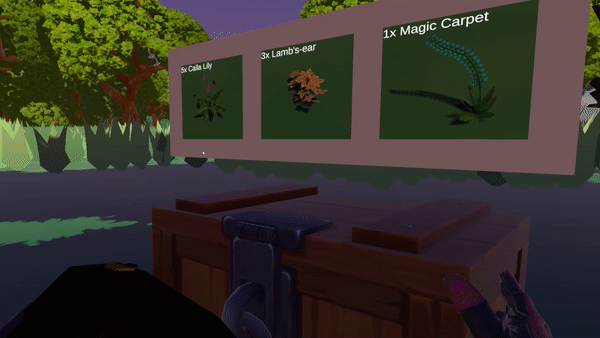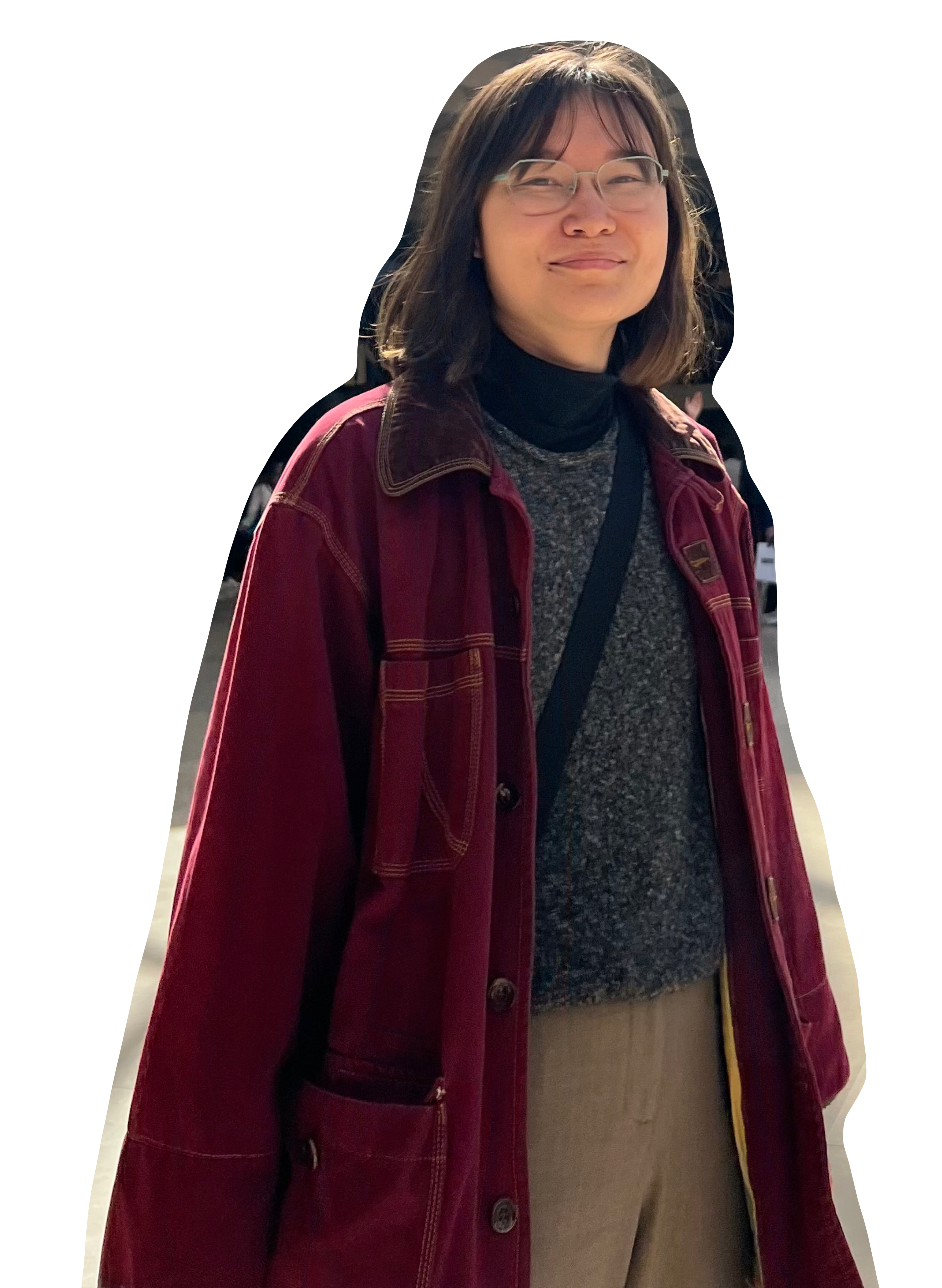DEBT TO A FOREST WITCH
Virtual Reality






Worked for:
7 weeks, Nov - Dec 2022
Created by:
January-Jones Carter and Erika Sampson
Individual Responsibilities:
7 weeks, Nov - Dec 2022
Created by:
January-Jones Carter and Erika Sampson
Individual Responsibilities:
- game design
- mechanic design
- environment design
- programming
Debt to a Forest Witch is the second and final project I developed for my CS 321: Virtual Reality course. In this game, players owe money to a witch and must make potions for her business to pay off the debt. Since we had used the previous project (Alien on a Train) to experiment and familiarize ourselves with VR development, the focus of this project was to design a fun and cohesive VR experience using the Unity engine and C#.
Development Process:
Since the focus of this project was more on creating a cohesive VR experience instead of just experimenting, the development process followed typical game development practices.
We began with ideation, where my partner and I brainstormed ideas and created a rough map of the environment, as well as an inventory of necessary assets and scripts.
The second phase involved greyboxing the world and fleshing out mechanics. One of the first mechanics I implemented was the ability to float objects towards the player with a wand to make the experience more accessible. The object movement script was inspired by the previous train movement script I developed, and mainly involved rotating the object to face the player’s hand and moving the object until it was within a certain distance from the player. I also worked on the potion making system by using trigger areas to track ingredient placement in the cauldron and compare the inputted ingredients with the recipes.
The final phase focused on replacing greyboxing with actual models, adding audio and text, and continuing to improve mechanics. As part of this process, I created a simple inventory system using scriptable objects and developed a dynamic inventory user interface. However, after playtesting the game, I realized that the inventory system needed further refinement to make it more intuitive and user-friendly. So, I made some changes, including adding a chest near the player's base where they could store their collected items, and a portable pouch that players could carry with them while searching for ingredients in the forest. In addition to the inventory system, I also worked on a quest system to track orders and update the player’s knowledge of recipes.
Challenges Faced:
The major challenge we faced with Debt to a Forest Witch was overscoping our project. Our ideas were too large for the amount of time and people we had, which mainly resulted in difficulties integrating the mechanics and visuals towards the end of the project. I had focused on scripting the mechanics using our greyboxing as placeholders, while my partner worked on the 3D modeling separately. Unfortunately, we did not allocate enough time to combine the two, leading to a period of intense pressure and time crunch. Through this experience, I learned that sometimes it's necessary to sacrifice certain features of a game in order to keep the project's scope manageable. Although we were able to complete our project just in time, it required a significant increase in the amount of effort we put in. In retrospect, it would have been better if we had simplified the complexity of our project before getting too deep into the development process.
Lessons Learned:
During the development of Debt to a Forest Witch, I came to the realization that even if a particular feature was ultimately cut from the project, the work that went into it wasn't necessarily wasted. For example, the waypoint finding script that I had to abandon from my previous project, Alien on a Train, ended up being repurposed for the movement spell in this project. Additionally, this project reinforced the importance of making gameplay easy and accessible for players. The movement spell, in particular, received positive feedback from players because it eliminated the need to bend down or stretch out to interact with objects in the game, and is the mechanic in the project that I am most proud of.
Developing Debt to a Forest Witch taught me the importance of project scoping and prioritizing features to ensure a manageable development process. I also expanded my knowledge of Unity and C# by integrating multiple mechanics into the game and learning how to use scriptable objects. Moving forward, if given the opportunity to work on this project again, I would focus on improving the player's experience by finding better ways of conveying information and making more conscious decisions about the placement of elements in the world. On a more specific level, I would also want to add the ability to stir the potion using the controller movement.
Development Process:
Since the focus of this project was more on creating a cohesive VR experience instead of just experimenting, the development process followed typical game development practices.
We began with ideation, where my partner and I brainstormed ideas and created a rough map of the environment, as well as an inventory of necessary assets and scripts.
The second phase involved greyboxing the world and fleshing out mechanics. One of the first mechanics I implemented was the ability to float objects towards the player with a wand to make the experience more accessible. The object movement script was inspired by the previous train movement script I developed, and mainly involved rotating the object to face the player’s hand and moving the object until it was within a certain distance from the player. I also worked on the potion making system by using trigger areas to track ingredient placement in the cauldron and compare the inputted ingredients with the recipes.
The final phase focused on replacing greyboxing with actual models, adding audio and text, and continuing to improve mechanics. As part of this process, I created a simple inventory system using scriptable objects and developed a dynamic inventory user interface. However, after playtesting the game, I realized that the inventory system needed further refinement to make it more intuitive and user-friendly. So, I made some changes, including adding a chest near the player's base where they could store their collected items, and a portable pouch that players could carry with them while searching for ingredients in the forest. In addition to the inventory system, I also worked on a quest system to track orders and update the player’s knowledge of recipes.
Challenges Faced:
The major challenge we faced with Debt to a Forest Witch was overscoping our project. Our ideas were too large for the amount of time and people we had, which mainly resulted in difficulties integrating the mechanics and visuals towards the end of the project. I had focused on scripting the mechanics using our greyboxing as placeholders, while my partner worked on the 3D modeling separately. Unfortunately, we did not allocate enough time to combine the two, leading to a period of intense pressure and time crunch. Through this experience, I learned that sometimes it's necessary to sacrifice certain features of a game in order to keep the project's scope manageable. Although we were able to complete our project just in time, it required a significant increase in the amount of effort we put in. In retrospect, it would have been better if we had simplified the complexity of our project before getting too deep into the development process.
Lessons Learned:
During the development of Debt to a Forest Witch, I came to the realization that even if a particular feature was ultimately cut from the project, the work that went into it wasn't necessarily wasted. For example, the waypoint finding script that I had to abandon from my previous project, Alien on a Train, ended up being repurposed for the movement spell in this project. Additionally, this project reinforced the importance of making gameplay easy and accessible for players. The movement spell, in particular, received positive feedback from players because it eliminated the need to bend down or stretch out to interact with objects in the game, and is the mechanic in the project that I am most proud of.
Developing Debt to a Forest Witch taught me the importance of project scoping and prioritizing features to ensure a manageable development process. I also expanded my knowledge of Unity and C# by integrating multiple mechanics into the game and learning how to use scriptable objects. Moving forward, if given the opportunity to work on this project again, I would focus on improving the player's experience by finding better ways of conveying information and making more conscious decisions about the placement of elements in the world. On a more specific level, I would also want to add the ability to stir the potion using the controller movement.
